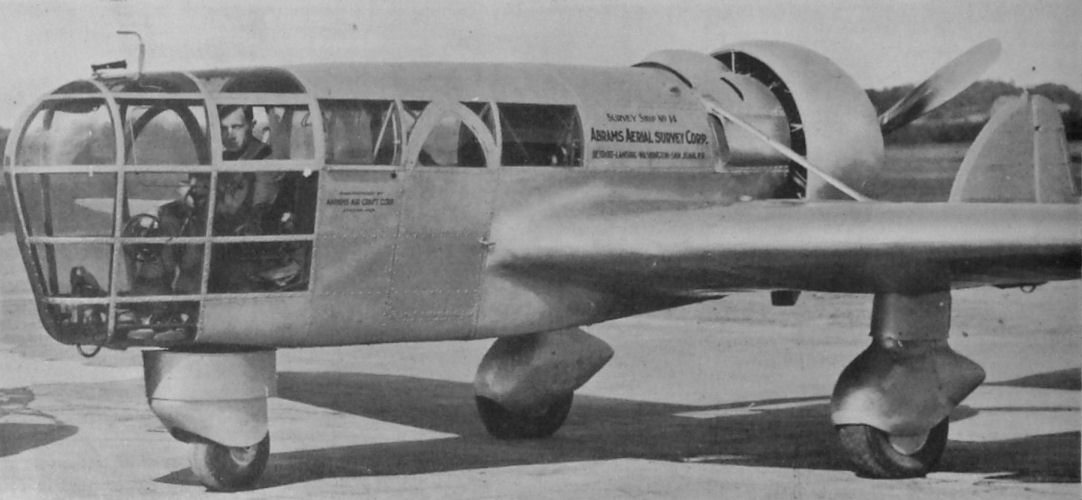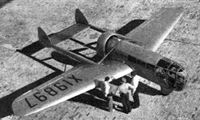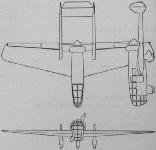
Описание
Страна : США
Год : 1937
Единственный экземпляр
Двухместный самолет, предназначенный для аэрофотосъемки, визуального наблюдения и картографирования
P-1 Explorer
Abrams Р-1 Explorer
Самолет с хорошим визуальным обзором из кабины Abrams Р-1 Explorer был разработан фирмой "Abrams Air Craft Corporation как устойчивая платформа, предназначенная для выполнения аэрофотосъемки и наблюдения за местностью.
Самолет Р-1 представлял собой двухбалочный низкоплан цельнометаллической конструкции. Вся передняя часть фюзеляжа - гондолы была застеклена для обеспечения экипажу из двух человек хорошего обзора из кабины.
В задней части гондолы-фюзеляжа установлен звездообразный двигатель воздушного охлаждения Wright R-975-E1 Whirlwind с двухлопастным металлическим воздушным винтом; задняя часть мотогондолы закрыта кольцевым обтекателем и жесткими подкосами связана с хвостовыми балками. Балки конической формы сужаются к хвостовой части. Вертикальное оперение - двухкилевое, стабилизатор расположен между балками. Крыло имеет положительное поперечное V. Шасси - трехопорное с носовой опорой, неубираемое, стойки и частично колеса закрыты обтекателями.
Единственный построенный самолет Р-1 выполнил первый полет в ноябре 1937 года. В 1938 году на самолет был установлен форсированный двигатель Wright мощностью 450 л.с. С новым мотором самолет развивал максимальную скорость 322 км/ч, скорость сваливания составляла 102 км/ч.
Начало Второй мировой войны прервало работы над самолетом, Р-1 передали на хранение. К концу войны самолет окончательно устарел. В 1948 году Р-1 был передан в Национальный авиационно-космический музей. Планировалось, что в конце 2008 году после завершения интенсивной реставрации самолет будет выставлен в основной экспозиции.
ТАКТИКО-ТЕХНИЧЕСКИЕ ХАРАКТЕРИСТИКИ
Abrams Р-1 Explorer
Тип: двухместный самолет, предназначенный для аэрофотосъемки, визуального наблюдения и картографирования
Силовая установка: один звездообразный двигатель воздушного охлаждения Wright R-975-E1 Whirlwind мощностью 365 л. с
Летные характеристики: макс, скорость на оптимальной высоте 298 км/ч; практический потолок 6400 м; дальность полета 2253 км
Массы: пустого 953 кг; нормальная взлетная 1542 кг
Размеры: размах крыла 11,18м; длина 8,08 м; высота 1,93 м; площадь крыла 18,58 м;
Описание:
- P-1 Explorer
- Flight, January 1938
Abrams Explorer Survey Pusher - Flight, October 1938
SURVEY SPECIAL
Фотографии
-
Jane's All the World Aircraft 1938 / 03 - All the world's aeroplanes
Регистрационный номер: X19897 [3] A close-up of the Abrams "Explorer" showing the pilot's position, photographic compartment and tricycle undercarriage.
-
Flight 1938-10 / Flight
Регистрационный номер: X19897 [3] The swept-back leading edge assists “visibility.”
-
Мировая Авиация 7
Регистрационный номер: X19897 [3] Самолет Abrams Explorer сконструировал один из пионеров воздушных путешествий Тальберт Абрамс. Построен в единственном экземпляре фирмой "Ronan & Kunzl", штат Мичиган, США.
-
Jane's All the World Aircraft 1938 / 03 - All the world's aeroplanes
The Abrams "Explorer".
-
Flight 1938-01 / Flight
General arrangement of the Abrams Explorer. The type is intended for specific duties - aerial survey.
- Фотографии




